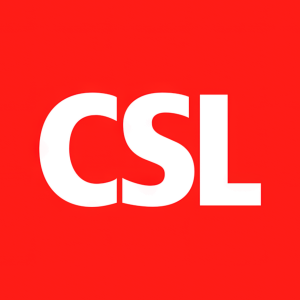Seqirus Announces U.S. FDA Approval for Multi-Dose Vial Presentation of First-Ever Adjuvanted, Cell-Based Pandemic Influenza Vaccine
Rhea-AI Summary
The FDA has granted approval for a multi-dose vial presentation of AUDENZ™, the first adjuvanted, cell-based influenza vaccine aimed at protecting against influenza A(H5N1) for individuals six months and older. Originally approved in February 2020, this new format will enhance pandemic preparedness, allowing Seqirus to deliver 150 million doses to the U.S. government within six months. AUDENZ utilizes proprietary MF59® adjuvant technology, which improves immune response and reduces the antigen needed per dose, thus expediting vaccine availability.
Positive
- FDA approval for multi-dose vial presentation of AUDENZ enhances pandemic preparedness.
- Seqirus can deliver 150 million doses to the U.S. government within six months.
- Utilizes MF59® adjuvant to improve immune response and reduce antigen per dose.
Negative
- None.
Insights
Analyzing...
SUMMIT, N.J., Nov. 23, 2021 /PRNewswire/ --
- The FDA has granted approval of multi-dose vial presentation for AUDENZ™ to help protect individuals six months of age and older against influenza A(H5N1) in the event of a pandemic.1
- As the first-ever adjuvanted, cell-based influenza vaccine, AUDENZ™ was originally approved by the FDA in February 2020 in prefilled syringe presentation.
- This approval marks an important milestone in the company's pandemic preparedness efforts in partnership with Biomedical Advanced Research and Development Authority (BARDA).
Seqirus, a global leader in influenza prevention and a business of CSL Limited (ASX:CSL), today announced that the U.S. Food and Drug Administration (FDA) has granted supplemental approval of a multi-dose vial (MDV) presentation of AUDENZ™ (Influenza A(H5N1) Monovalent Vaccine, Adjuvanted), the first-ever adjuvanted, cell-based influenza vaccine designed to help protect individuals six months of age and older against influenza A(H5N1) in the event of a pandemic.1
The FDA approval of the MDV presentation2 of AUDENZ™, which was originally approved by the FDA in 2020 in a single dose, prefilled syringe (PFS) presentation, marks an important milestone in Seqirus' pandemic preparedness efforts in partnership with Biomedical Advanced Research and Development Authority (BARDA), a component of the Office of the Assistant Secretary for Preparedness and Response (ASPR) within the U.S. Department of Health and Human Services (HHS). Under the terms of the public-private partnership, established in 2009, Seqirus would position itself to deliver 150 million influenza vaccine doses to the U.S. government to support an influenza pandemic response within six months.3,4
"Producing AUDENZ in multi-dose vials allows for increased speed and efficiency, which is absolutely critical to help protect public health in the case of an influenza pandemic," said Marc Lacey, Executive Director, Pandemic Response Solutions, Seqirus. "According to the CDC, the influenza A(H5N1) virus is highly pathogenic and has high pandemic potential, so it's critical to be prepared. Seqirus is committed to partnering with key stakeholders to develop adequate and effective influenza pandemic preparedness plans."
Seqirus' Adjuvanted, Cell-Based Technology
AUDENZ™ combines Seqirus' proprietary MF59® adjuvant technology with its cell-based manufacturing platform. Cell-based manufacturing, an alternative to traditional egg-based manufacturing, avoids egg-adapted changes, one source of strain mismatch between the vaccine and circulating influenza virus.5,6
Influenza vaccines using the MF59® adjuvant are designed to enhance and broaden the body's immune response by creating broad, cross-reactive antibodies.7,8,9 This adjuvant is an important part of pandemic preparedness planning as it reduces the amount of antigen required to produce an immune response, increasing the number of doses of vaccine developed, so that a large number of people can be vaccinated as quickly as possible.10,11
Longstanding Partnership Between Seqirus and BARDA
Seqirus' longstanding partnership with BARDA also supported the company's cell-based manufacturing facility in Holly Springs, N.C., the first such domestic facility, that utilizes a highly scalable method of production.
In October 2021, Seqirus announced a new
About Pandemic Influenza
Pandemic influenza, is a contagious airborne respiratory disease which is unpredictable in timing and severity.12 The risk of influenza-associated morbidity and mortality is greater with pandemic influenza than with seasonal influenza because there is likely to be little or no pre-existing immunity to the virus in the human population.13 Four influenza pandemics have occurred over the past century, with the 1918 pandemic being the most severe in recent history, estimated to have killed up to 50 million people worldwide.14 According to the CDC, a novel influenza A virus such as the highly pathogenic avian A(H5N1) strain can cause severe disease and have a high mortality rate.15 If the influenza A(H5N1) virus were to change and become easily transmissible from person to person while retaining its capacity to cause severe disease, the consequences for public health could be severe.15
About Seqirus
Seqirus is part of CSL Limited (ASX: CSL). As one of the largest influenza vaccine providers in the world, Seqirus is a major contributor to the prevention of influenza globally and a transcontinental partner in pandemic preparedness. With state-of-the-art production facilities in the U.S., the U.K. and Australia, and leading R&D capabilities, Seqirus utilizes egg, cell and adjuvant technologies to offer a broad portfolio of differentiated influenza vaccines in more than 20 countries around the world.
About CSL
CSL (ASX:CSL; USOTC:CSLLY) is a leading global biotechnology company with a dynamic portfolio of lifesaving medicines, including those that treat haemophilia and immune deficiencies, as well as vaccines to prevent influenza. Since our start in 1916, we have been driven by our promise to save lives using the latest technologies. Today, CSL – including our two businesses, CSL Behring and Seqirus – provides lifesaving products to patients in more than 100 countries and employs more than 25,000 people. Our unique combination of commercial strength, R&D focus and operational excellence enables us to identify, develop and deliver innovations so our patients can live life to the fullest. For inspiring stories about the promise of biotechnology, visit CSLBehring.com/Vita and follow us on Twitter.com/CSL.
For more information visit www.seqirus.com and www.csl.com.
Intended Audience
This press release is issued from Seqirus USA Inc. in Summit, New Jersey, USA and is intended to provide information about our global business. Please be aware that information relating to the approval status and labels of approved Seqirus products may vary from country to country. Please consult your local regulatory authority on the approval status of Seqirus products.
Forward-Looking Statements
This press release may contain forward-looking statements, including statements regarding future results, performance or achievements. These statements involve known and unknown risks, uncertainties and other factors which may cause our actual results, performance or achievements to be materially different from any future results, performances or achievements expressed or implied by the forward-looking statements. These statements reflect our current views with respect to future events and are based on assumptions and subject to risks and uncertainties. Given these uncertainties, you should not place undue reliance on these forward-looking statements.
AUDENZ™ (Influenza A(H5N1) Monovalent Vaccine, Adjuvanted)
Important Safety Information
INDICATION AND USAGE
AUDENZ is an inactivated vaccine indicated for active immunization for the prevention of disease caused by the influenza A virus H5N1 subtype contained in the vaccine.
AUDENZ is approved for use in persons 6 months of age and older at increased risk of exposure to the influenza A virus H5N1 subtype contained in the vaccine.
CONTRAINDICATIONS
Do not administer AUDENZ to anyone with a history of a severe allergic reaction (e.g., anaphylaxis) to any component of the vaccine, or after a previous dose of an influenza vaccine.
WARNINGS AND PRECAUTIONS
- Hypersensitivity reactions can occur. Appropriate medical treatment and supervision must be available to manage possible severe allergic reactions (e.g., anaphylaxis) following administration of the vaccine.
- If Guillain-Barré syndrome has occurred within 6 weeks of receipt of a prior influenza vaccine, the decision to give AUDENZ should be based on careful consideration of potential benefits and risks.
- Vaccination with AUDENZ may not protect all recipients. Immunocompromised persons, including those receiving immunosuppressive therapy, may have a diminished immune response to AUDENZ.
ADVERSE REACTIONS
- In adults 18 through 64 years of age, the most common (≥
10% ) solicited local and systemic reactions reported in clinical trials were injection site pain (64% ), fatigue (25% ), headache (25% ), malaise (22% ), myalgia (14% ), arthralgia (10% ), and nausea (10% ). - In adults 65 years of age and older, the most common (≥
10% ) solicited local and systemic reactions reported in clinical trials were injection site pain (36% ), fatigue (20% ), malaise (16% ), headache (16% ), and arthralgia (10% ). - In infants and children, 6 months through 5 years of age, the most common (≥
10% ) solicited local and systemic reactions reported in clinical trials were tenderness (56% ), irritability (30% ), sleepiness (25% ), change in eating habits (18% ), and fever (16% ). - In children 6 through 17 years of age, the most common (≥
10% ) solicited local and systemic reactions reported in clinical trials were injection site pain (68% ), myalgia (30% ), fatigue (27% ), malaise (25% ), headache (22% ), loss of appetite (14% ), nausea (13% ), and arthralgia (13% ).
To report SUSPECTED ADVERSE REACTIONS, contact Seqirus at 1–855–358–8966 or VAERS at 1–800–822–7967 or www.vaers.hhs.gov.
Before administration, please see the full Prescribing Information for AUDENZ.
AUDENZ and MF59® are registered trademarks of Seqirus UK Limited or its affiliates.
USA-H5N1-21-0001
MEDIA CONTACT
Maria Tortoreto
+1 (201) 248-5208
Maria.Tortoreto@Seqirus.com
1 AUDENZ™ (Influenza A (H5N1) Monovalent Vaccine, Adjuvanted) [package insert]. Holly Springs, NC: Seqirus Inc; 2021.
2 Centers for Disease Control and Prevention (CDC). (2019) Questions about Multi-dose vials. Retrieved from: https://www.cdc.gov/injectionsafety/providers/provider_faqs_multivials.html. Accessed November 2021.
3 This project has been funded in whole or in part with Federal funds from the Office of the Assistant Secretary for Preparedness and Response, Biomedical Advanced Research and Development Authority, under contract numbers HHSO100201800004I and HHSO100200900101C.
4 This project has been funded in whole or in part with Federal funds from the Office of the Assistant Secretary for Preparedness and Response, Biomedical Advanced Research and Development Authority, under contract numbers HHSO10020060001F2C, HHSO100200700030C, HHSO100200900101C and HHSO100201200003I.
5 CDC. (2021). Cell-Based Flu Vaccines. Retrieved from: https://www.cdc.gov/flu/prevent/cell-based.htm. Accessed November 2021.
6 Rajaram, S., Boikos, C., Gelone, et al. (2020). Influenza Vaccines: The Potential Benefits of Cell-Culture Isolation and Manufacturing.
7 Frey SE, Aplasca-De Los Reyes MR, Reynales H, et al. (2014). Comparison of the safety and immunogenicity of an MF59®-adjuvanted with a non-adjuvanted seasonal influenza vaccine in elderly subjects. Vaccine. 2014;32:5027-5034
8 O'Hagan DT, Ott GS, Nest GV, Rappuoli R, Giudice GD. (2013). The history of MF59® adjuvant: a phoenix that arose from the ashes. Expert Rev Vaccines. 2013;12(1):13-3
9 Banzhoff A, Pellegrini M, Del Giudice G, Fragapane E, Groth N, Podda A. (2008). MF59-adjuvanted vaccines for seasonal and pandemic influenza prophylaxis. Influenza Other Respir Viruses. 2008;2(6):243-249
10 Khurana, S, Verma, N, Yewdell, JW, et al. (2011) MF59 adjuvant enhances diversity and affinity of antibody-mediated immune response to pandemic influenza vaccines. Retrieved from: https://www.ncbi.nlm.nih.gov/pmc/articles/PMC3501657/. Accessed November 2021.
11 Reed, SG, Orr, MT, Fox, CB. (2013). Key roles of adjuvants in modern vaccines. Retrieved from: https://www.nature.com/articles/nm.3409. Accessed November 2021.
12 CDC. (2016). Pandemic Basics. Retrieved from: https://www.cdc.gov/flu/pandemic-resources/basics/index.html. Accessed November 2021.
13 WHO. (2021). How pandemic influenza emerges. Retrieved from: https://www.euro.who.int/en/health-topics/communicable-diseases/influenza/pandemic-influenza/how-pandemic-influenza-emerges. Accessed November 2021.
14 WHO. (2017). Pandemic Influenza Risk Management: A WHO guide to inform and harmonize national and international pandemic preparedness and response. Retrieved from: https://apps.who.int/iris/bitstream/handle/10665/259893/WHO-WHE-IHM-GIP-2017.1-eng.pdf;jsessionid=4421F16879D2F8B96481F8D0C745C7F3?sequence=1. Accessed November 2021.
15 CDC. (2015). Highly Pathogenic Asian Avian Influenza A(H5N1) in People. Retrieved from: https://www.cdc.gov/flu/avianflu/h5n1-people.htm. Accessed November 2021.
![]() View original content:https://www.prnewswire.com/news-releases/seqirus-announces-us-fda-approval-for-multi-dose-vial-presentation-of-first-ever-adjuvanted-cell-based-pandemic-influenza-vaccine-301430826.html
View original content:https://www.prnewswire.com/news-releases/seqirus-announces-us-fda-approval-for-multi-dose-vial-presentation-of-first-ever-adjuvanted-cell-based-pandemic-influenza-vaccine-301430826.html
SOURCE Seqirus






